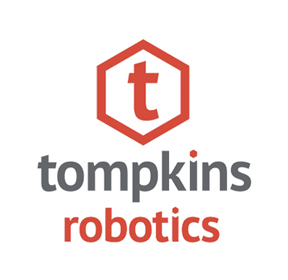2 min read
Central Fill Pharmacy Operations Drive Industry-Wide Automation
 Tompkins Robotics
May 29, 2025
Tompkins Robotics
May 29, 2025
The pharmacy industry is experiencing a major shift toward centralized fulfillment operations. Walmart's recent announcement of its 102,000 square foot Frederick, Maryland facility—capable of processing 100,000 prescriptions daily—highlights a trend that's reshaping how pharmacies handle volume and patient care.
The Central Fill Revolution
Central fill operations solve a critical problem: freeing skilled pharmacists from repetitive sorting and fulfillment tasks so they can focus on patient care. Walmart reports their automation enables 30% more pharmacist-patient interactions, allowing professionals to work at the top of their license providing clinical services, immunizations, and patient counseling.
This mirrors what we're seeing across industries—companies using automation to handle high-volume, repetitive tasks while human expertise focuses on complex, value-added work.
Key Challenges in Pharmacy Fulfillment
Central fill operations face unique requirements that standard warehouse automation often can't address:
Accuracy Above All: Prescription errors have serious consequences. Systems must deliver near-perfect accuracy rates while maintaining high throughput.
Regulatory Compliance: HIPAA regulations and pharmaceutical handling requirements demand specialized tracking and security measures throughout the fulfillment process.
Product Variability: From pills weighing less than an ounce to larger bottles, pharmacy operations handle diverse product sizes that require flexible sortation capabilities.
Volume Fluctuations: Seasonal illness patterns and prescription cycles create demand spikes that systems must handle without adding manual labor.
The Modular Automation Advantage
Traditional pharmacy automation often requires massive upfront investment and lengthy implementation periods. Modern modular robotic solutions offer a different approach:
Scalable Implementation: Operations can start with core functionality and add capacity as volumes grow, matching investment to actual demand rather than projected peaks.
Space Efficiency: Modular systems work within existing facility constraints, maximizing throughput per square foot without requiring new construction.

Integration Ready: Modern systems integrate with existing pharmacy management software and WMS platforms, preserving current workflows while adding automation benefits.
Minimal Disruption: Phased implementation means operations continue during deployment, avoiding the operational shutdowns that plague traditional automation projects.
Real-World Impact
The results speak for themselves. Facilities implementing modern robotic sortation experience:
- 99%+ accuracy rates in prescription fulfillment
- 40-60% reduction in manual sorting labor
- Ability to handle 3x volume spikes during peak periods
- Faster prescription turnaround times
- Reduced worker fatigue and repetitive strain injuries
Looking Forward
As Walmart continues expanding central fill operations, the industry message is clear: automation isn't just about efficiency—it's about streamlining the path to better patient care.
The most successful implementations combine robotic precision for repetitive tasks with human expertise for complex decision-making. This hybrid approach delivers both operational efficiency and improved patient outcomes.
For pharmacy operations considering automation, the question isn't whether to automate, but how to implement solutions that grow with your operation while delivering immediate value.
The future of pharmacy fulfillment is modular, scalable, and designed around the reality that great patient care starts with efficient operations behind the scenes.
About Tompkins Robotics
At Tompkins Robotics, we leverage advanced robotic hardware, cutting-edge software, and decades of industry experience to empower our clients across multiple sectors. Our mission is to enhance operational efficiency and effectiveness, driving forward the future of automated systems.